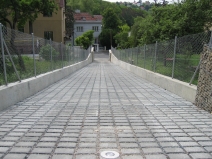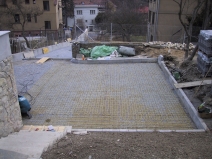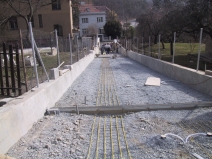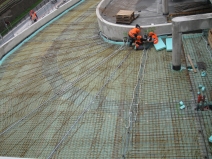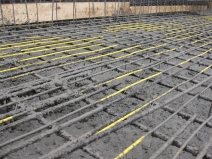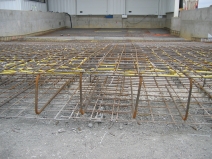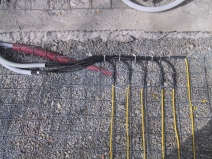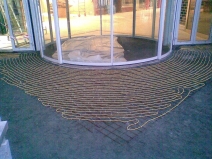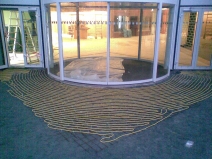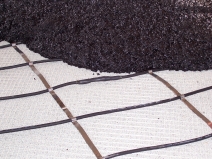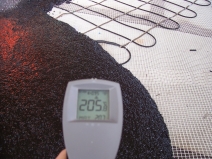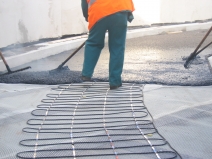Underestimating the preparations and the installation itself can become a great complication in the comfortable use of a heating system. Which is why you should entrust this to a professional company and let yourself to be advised, eventually let them carry out the whole installation.
The method of installation of heating cables changes with the heated surface, the most important issue being the its composition. The most common type is a monolitic concrete plate braced with a steel fixture (usually a KARI net). Larger and irregular areas are divided by dilatation joints into smaller sections - up to 30m2. It is ideal to use the steel fixture for the instalation of heating cables by fixing them to it. It is required, that the heating cable is laid from 3 to 6cm under the surface, with the condition, that it isn´t lower than half of the thickness of the concrete layer. A too small concrete cover of the heating cables could lead to cracks and peeling of the concrete. On the other hand, if the cables are placed too deep, they won´t be able to function properly and reliably, because of massive heat losses into the surroundings. If the heating cables are placed in the supporting construction of the surface, it is usually concreted at one time.

Installation into concrete
- monolitic concrete plate (6 cm – 25 cm),
- steel reinforcing brace with heating cable,
- subsoil or other base.
If the final concrete layer is thinner than 6cm (it is only for cover), it is usually laid on the base layer. This means that firstly, the base concrete is built on the hutněné gravel subsoil. On this, the Kari net is placed and the heating cables are fixed to it. Eventually, it is possible to attach the heating cables onto FX/FXT fixating strips, which are anchored into the base layer. A heating system prepared this way is then poured over with a second concrete layer.
Another type of surface is a paved area. If the pavement is laid into a dry foundation such as sand or fine gravel, its minimal thickness is 4cm. The heating element is to be attached onto a supporting component (mostly the Kari net) to ensure an even spreading of the output in the area. Alternatively, heating mats can be used in outdoor areas.

Installation into sand under the pavement
- lock pavement (6 cm / 8 cm),
- steel reinforcing brace with heating cable (in the middle of the under-poured layer),
- subsoil or other base.
Note:
When the pavement is laid into humid but even dry concrete, the installation process is the same as with a concrete area, only the covering layer of concrete must be as thin as possible, cca 1cm.

Installation into asphalt
